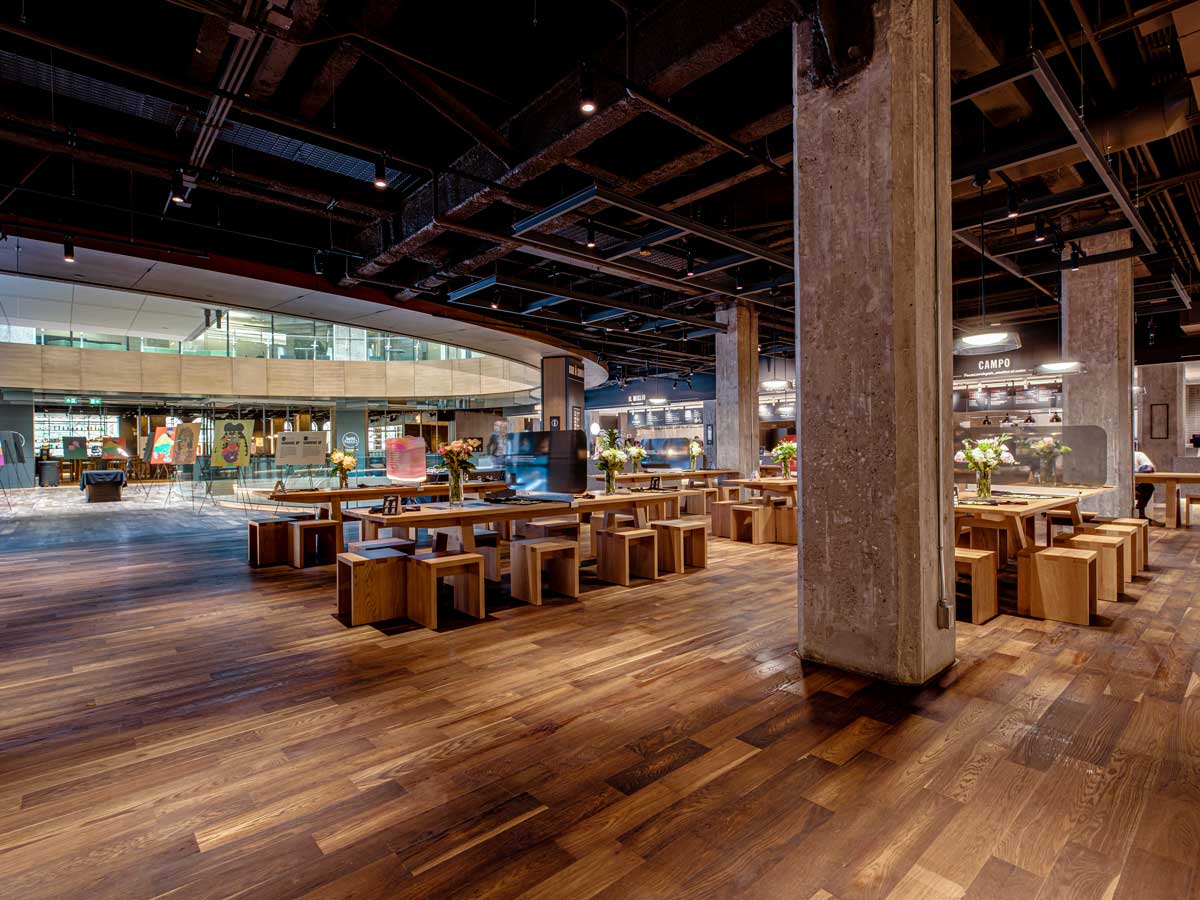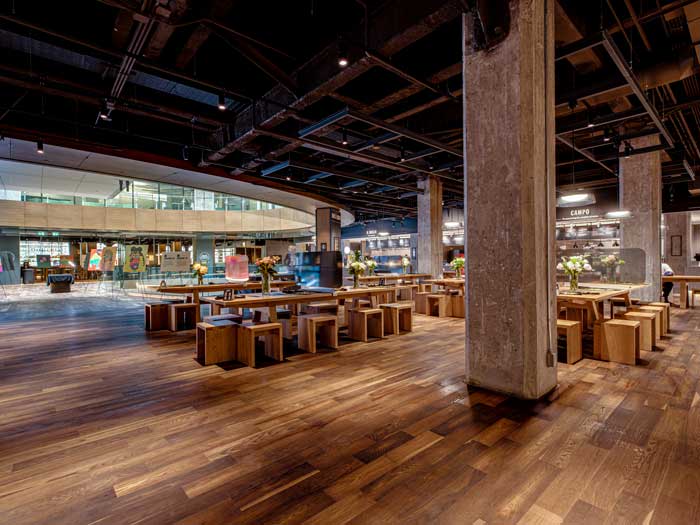
These high-end food courts are a category of their own
 Time Out Market is one of three food halls in Montreal (Courtesy of Time Out)
Time Out Market is one of three food halls in Montreal (Courtesy of Time Out)
If your idea of a food court involves bolted-down chairs, a vintage Orange Julius and a combination Pizza Hut-Taco Bell, prepare for a big surprise. The modern food court— “Food Hall” is preferred now—is going gourmet.
Goodbye assembly-line burgers and hello hand-pressed tortillas stuffed with carefully prepared local ingredients; Indo-Nepalese dumplings; sushi from a Michelin-starred chef and dry-hopped IPAs from local microbrewers.
Toronto’s Chef’s Hall became Canada’s first such chef-driven marketplace—where small local eateries ply their trade under one roof—when it opened in December 2017, followed by the Annex Food Hall the following year. Vancouver is expecting its first food hall, a 26,000-square-foot operation at The Post—an ambitious redeveloped office block that will also become home to an Amazon office space–in 2023.
Not surprisingly, Montreal, arguably Canada’s most food-obsessed city, has embraced food halls with verve. Between September 2019 and January 2020, three food halls opened in the city: Le Central, Time Out Market and Le Cathcart.
It is up to Montreal’s food savvy diners to determine which of the three provides the best food, atmosphere and value. But the 40,000-square-foot, 650-seat Time Out Market has already positioned itself as a force to be reckoned with—not only in Montreal, but around the world.
The market is an extension of the Time Out magazine brand. It started as a consumer magazine in London in 1968 and expanded to New York in 1995. Today, thanks to licensing agreements, the magazine is published in more than 300 cities across 59 countries. The publication’s editorial and cultural assets were first applied to a brick-and-mortar venture with the opening of the first Time Out Market in Lisbon in 2014, taking over the Mercado da Ribeira, a traditional market hall opened in the late 19th century.
Lisbon’s 32,000-square-foot market seats 900 guests and is serviced by 26 restaurants. To say that it has been a success is an understatement. In 2019, it attracted 4.1 million visitors (at least a quarter of them seemingly there on the afternoon I visited) and is now considered one of Lisbon’s most popular attractions.
“There was a desire to physically manifest the amazingness of the Time Out media—the curation, all of that—into a place,” explains Jay Coldren, COO of Time Out Market North. “In Lisbon there was an amazing space, so it fit and it was such a good thing for the city. It was the perfect storm of the right place at the right time and I think it made Time Out realize, ‘Wow, I think there’s something really here.’”
With Lisbon as the proof of concept, the company spent a couple of years assembling a team, then launched into a formal development phase. From there growth was quick. In 2019, five new Time Out Markets opened in North America: Boston, Chicago, Miami, New York and Montreal.
Situated in the city’s Centre Eaton, the Time Out Montreal market is serviced by 16 eateries from such notable restaurateurs as Normand Laprise, Paul Toussaint and Carlos Ferreira.
For its tenant chefs, one of the draws is the turnkey business model. “We are providing everything related to capital,” explains Time Out Montreal’s general manager, Laurent Ruffier-Lanche. “We take care of all the kitchen equipment, the management, we are providing all the utilities: gas, electricity, licences. The only thing the restaurant has to bring is the expertise to do the menu and the staff to execute it.”
Time Out receives a commission of the sales and the restaurants sign one-year renewable contracts, allowing for flexibility on both sides.
At first, it seemed like Montreal would repeat Lisbon’s success. “People were waiting for us to open and we were packed,” explains Ruffier-Lanche. “I had to order more chairs and tables after three months of opening. But then we had the pandemic.”
One by one, the Time Out Markets shut their doors and the impact was felt across the organization. Results for the 18 months ending June 30, 2021, reveal that gross revenue declined to $76.6 million, down from $131.5 million in 2019, and net revenue dropped to $64.5 million from 2019’s $108 million, mostly as a result of the forced closures. (What profits remained came from a pivot to online and the launch of Time In, a pandemic-driven digital version of the magazine.)
“Fortunately, we were able to maintain the majority of our management team from all of our markets,” says Coldren. “For a six or eight month period before the shut down, we were able to get some really great data about the markets’ viability, so we know coming back where we are as a percentage of 2019. And in New York, for example, I think we were in the 95th percentile as far as coming close to hitting to those pre-COVID numbers.”
As the pandemic wears on, the food hall model may be put on pause once more. But, in the long run, for an industry that has been gutted by COVID-19, the halls look to be a bright spot in an otherwise fairly grim picture. At the very least, giving diners a choice between something more than deep-fried junk food and pan-fried junk food is a step in the right culinary direction.
FOOD FOR THOUGHT
Read about the CPA who moonlights as an Instagram foodie, the rise of virtual restaurants and whether nut milk is here to stay.